supercars
EV Supercars

Porsche Taycan Turbo S
Porsche has already built their fully electric supercar and it’s called the Taycan. Currently, the quickest Taycan is the Taycan Turbo S, which boasts 560 kW of power, 1,050 N⋅m of torque, a 0-100 km/h sprint time of just 2.8 seconds and a top speed of 260 km/h. We knew it would be fast, but it will also manage around 400 km of travel before a recharge is needed. Of course, that range will be affected by factors like the weather, number of hills in your commute, how heavy your right foot is, how many on-board features you’re running and how much extra weight is on board – all much the same traits that affect combustion consumption…
Tesla is the biggest name in electric vehicles, and their new Roadster sets the supercar performance benchmark. Revealed back in 2017, the second-generation Tesla Roadster will be capable of skipping through the 0-100 km/h in around 2 seconds, the 0-160 km/h dash in 4.2 seconds, the quarter mile in 8.8 seconds and boast a top speed of around 400 km/h. These records are aided by a phenomenal 10,000 Nm combined torque output for the AWD system and a drivable range before recharging of even over 900 km. The new Tesla Roadster sales will likely begin 2022.
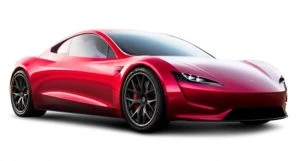
Tesla Roadster
Porsche and Tesla are, perhaps, the more well-known leaders in EV supercar technology.
Ferrari has yet to build a fully electric car. Ferrari is concentrating on their hybrid supercars; the new Ferrari SF90 Stradale being the latest model that incorporates electric motors with the combustion engine layout. Ferrari claims the SF90 Stradale can clean out the 0-100 km/h sprint in well under 3 seconds, the 0-200 km/h dash in less than 7 seconds, while reaching a top speed in excess of 330 km/h. The SF90 Stradale can also travel 12-to-24 km on battery power alone. John Elkann, from Ferrari, says the company will offer its first electric supercar at some stage this decade, but the hybrid models would still form part of its line-up even in 2030. However, that said, Ferrari is looking to sell the Ferrari Purosangue as their first SUV with hybrid engines, along with a fully-electric powertrain for the two following Purosangue models. From the word go, the Purosangue will be designed with the chassis structured to take full electric power. The first hybrid Purosangue should be on sale between 2024 and 2026.
You can’t talk about Ferrari’s electric future without considering Lamborghini’s. Lamborghini has yet to develop an all-electric supercar. Come 2021/2022, Lamborghini is offering a production hybrid supercar called the Lamborghini Sian FKP 37. That sounds like a similar direction to Ferrari; however, Lamborghini did unveil the Terzo Millennio concept car back in 2017.
So, who else is offering fully electric supercars? The following EV supercars have been built up by various entrepreneurs and joint ventures and are, therefore, very rare. Here are some of them to whet your appetite:
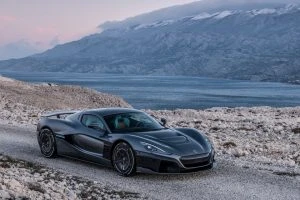
Rimac C_Two
The Rimac C_Two has a 412 km/h top speed backed up with approximately 500 km of electric range.
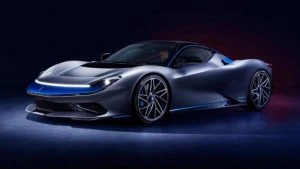
Pininfarina Battista

Lotus Evija
The Lotus Evija has a claimed 1,680 kg weight – pretty light for an EV supercar.
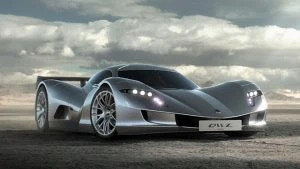
Aspark Owl
Aspark Owl with its 0-100 km/h sprint done and dusted in less than 2 seconds. Top speed over 400 km/h.
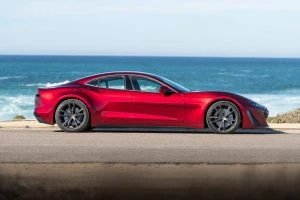
Drako-GTE
The Drako GTE is the brainchild of two Californian-based engineers and entrepreneurs. The car should deliver around 8,880 Nm of torque and a 400 km/h-plus top speed.
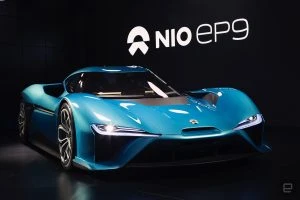
Nio-ep9
The Nio EP9 has actually delivered a 6 m 45.9 sec Nürburgring lap in the hands of Scottish driver Peter Dumbreck. The EV supercar boasts around 6334 Nm of torque and a down-force claimed to be twice that of an F1 car.
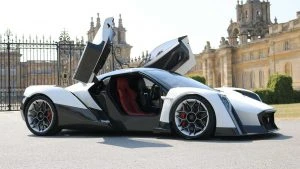
Dendrobium D-1
The Dendrobium has money and inspiration provided to it from Singapore; however it is being engineered and developed in the UK by Williams Advanced Engineering, and with people who were involved in the McLaren F1 design.
Aussie’s Rosco aiming for 1000 mph
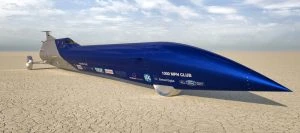
Aussie Invader 5R
It might be a bit hard to call it a conventional car but then it’s not really a conventional car in the sense that the Aussie Invader 5R rocket-car looks more plane/rocket in its appearance. The Aussie Invader 5R rocket-car boasts an insanely long arrow-shaped design with three wheels, large aerodynamic wind deflectors and an engine with close to 150,000 kW! Yes, that’s correct; you did read that figure correctly. To put that in perspective, an Aussie V8 Supercar puts out, on average, around 475 kW of power. Now, if you’ve ever experienced the wonderful roar of these V8s when they blast by around the circuit, then you can understand the aura of such kW potency. But this Aussie Invader 5R rocket-car makes as much power as 316 of these Aussie V8 Supercars put together! The Aussie Invader 5R rocket-car is powered by a single bi-propellant rocket reportedly capable of producing upwards of 62,000 lbf of thrust. That’s over four times more than a Boeing 737 jet!
Founder and designer of the new Aussie Invader 5R rocket-car, Rosco McGlashan, has the world’s fastest land speed record in his sights. He will reportedly be the pilot of the 16-metre long, nine-tonne steel-framed vehicle. And the target? The target top speed of 1609 km/h (1000 mph) would be the fastest of any land-going vehicle, ever. And 1000 mph would see it blitz the current land speed record held by the Noble Thrust SSC on a Nevada salt flat in 1997, which averaged 1223.7 km/h and broke the sound barrier while doing so.
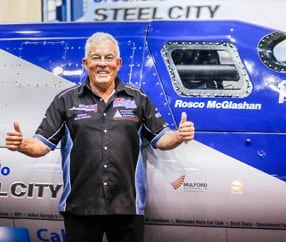
Rosco McGlashan
Rosco McGlashan would like to set the new record next year once all the Covid palaver is over-and-done-with, and it will likely be set somewhere in the Queensland or Western Australian desert. Rosco is no stranger to setting speed records; he is already the holder of the Australian land speed record, where in 1994 he clocked 802.6 km/h behind the wheel of a jet-powered predecessor to the Aussie Invader 5R out on the dry salt flats of Lake Gairdner, near Adelaide. He has, after all, built all of his drag racing, exhibition, and land-speed racing vehicles himself over the years in a shed at his home.
Rosco has accurate computer modelling on the Aussie Invader 5R rocket-car, which suggests that the Aussie Invader 5R rocket-car will have enough power and thrust for launching the car from 0-100 km/h in approximately 1.1 seconds. It should reach its target of 1000 mph in less than 30 seconds. Slowing the Aussie Invader 5R rocket-car down is no mean feat and will thus will require a full 13 km of flat desert just to stop it. A multi-stage deployment of high-speed hydraulic air brakes, mid-speed parachutes, and low-speed disc brakes have been designed to activate progressively to safely bring the vehicle to a halt.
Picking an exact location will depend largely on which organization or individual steps up as the primary sponsor for the effort. As will the practical necessity of having 5 km of flat desert for getting up to speed plus another 13 km to stop it.
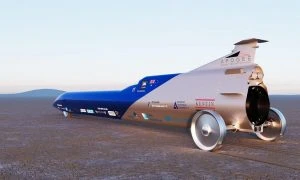
Aussie Invader 5R
Era’s End: 2020 B1000 Says Goodbye To The Lion
Motorsport at Bathurst will see the end of an era for the “long” weekend of October 15 to 18. Covering four days, with practice, qualifying, and racing for the main game of Supercars and the supporting categories, it’s a tradition that sees an end to an era in 2020.
Starting in the 1960s as the Armstrong 500, and undergoing several sponsorship name changes, such as the Hardie-Ferodo, Tooheys, and more recently Supercheap, Australia’s “Great Race” says goodbye to Holden as a brand and competitor this weekend.
With the closure of the manufacturing side of the brand in 2018 and the subsequent decision by General Motors to retire the century-plus old name of Holden, a name that has been a constant at the mountain for over two decades, and a history that goes back another three, to think that the name will finally disappear from showrooms and timing sheets for ever is almost impossible to consider.
Holden itself began as a saddlery in 1856 by James A. Holden. He had emigrated to Australia from England in 1852. 1905 and James’ son, Edward, who had been dabbling in the still new field of automobiles, joined the company. This lead to the firm becoming involved in providing minor repairs to the upholstery in vehicles of the day. After some years of build bodies to be mounted on chassis, Holden’s Motor Body Builders was founded in 1917. General Motors bought the firm in 1931 after The Great Depression took its toll and General Motors-Holden was born.
Holden gave us the 48-215 and FJ, the EH 179 Special, the brutal 350ci Monaro and nimble XU-1, the downright sexy LX A9X Torana hatchback, and of course, the Bullpitt favourite. The Kingswood. There was the 186ci, the 253ci, and our own homegrown power hero, the 308ci.  Then came 1978 and the birth of a nameplate that would underpin Holden until 2018. First up was an Aussie icon designation, the VB. 1984 and the world car VK, followed by the Nissan powered VL, the restyled VR and the billion dollar baby VE before the final V series car, the VF. The ZB Commodore would be the nail in the coffin as far as many were concerned as it was front, not rear, wheel drive. Gone was the V8 and a “proper” four door as the ZB was a fastback design.
Then came 1978 and the birth of a nameplate that would underpin Holden until 2018. First up was an Aussie icon designation, the VB. 1984 and the world car VK, followed by the Nissan powered VL, the restyled VR and the billion dollar baby VE before the final V series car, the VF. The ZB Commodore would be the nail in the coffin as far as many were concerned as it was front, not rear, wheel drive. Gone was the V8 and a “proper” four door as the ZB was a fastback design.
The Red Lion brought to public prominence Brock. Peter Geoffrey Brock, if you don’t mind. There is Bruce McPhee and Barry Mulholland, Colin Bond and Tony Roberts, Larry Perkins, John Harvey, Russell Ingall, Craig Lowndes, Mark Skaife, Steven Richards that all have red lion blood in the veins.
It’s not all beer and skittles though. Viva, Epica, Malibu are names that will remain associated with the brand and did little to help the public perception of a brand that had lost its way. Stories of indifferent dealership service practices and a slowness to move with the market also blurred the once untarnished badge’s line between want and want not.
Holden had a proud history in Australia, in both the automotive retail sector and in motorsport. In that sense it officially reaches the end of the line late in the afternoon of Sunday October 18 2020.
Vale, Holden.
Supercars – Just For the Hell of it!

Bugatti Chiron Super Sport
Fast cars mean different things to different people. What is the draw card for driving a quick car? For me, a super-fast car does hold an aura that you just can’t associate with your typical Toyota Corolla or Ford Mondeo. I have nothing against these two amazingly practical, comfortable and reliable cars. They are great cars for everyday life in much the same way that the trusty hackney pony/horse was the common horsepower used by most family carts in the 19th century. The thoroughbred horse, however, was the show pony; this was the one that had the aura, the glamour and the speed.
So, similarly, there’s something about supercars. It’s not just how good they look; it’s about the engineering and development that has gone into making them so quick. A supercar challenges the laws of physics every day. And there aren’t too many of us “kids at heart” who don’t enjoy the speed and the thrill covering the ground quickly. I did have the most amazing experience as I was driving into Wellington city, NZ, of all places. This was some years ago now, and I was cruising in to Wellington to catch the ferry to Picton. I happened to be travelling behind a few cars that were drifting five-or-so km/h under the speed limit. From out of nowhere, a Porsche 928 S whipped out and around me in an acceleration of speed that left me in awe. It slipped in and out of the cars ahead of me like they were standing still, and the visual excitement has stuck with me to this day. I have also never seen anything like it since. He wasn’t dangerous, either. Each overtaking manoeuvre was carefully calculated and quite safe. The time it took to whip past each car was over as quickly as it started.
So, just for a bit of fun: What are the fastest production cars in the world today? They’ll definitely be quicker than the awesome 928 S, for sure!
The number 1 undisputed champion is the Bugatti Chiron Super Sport which has been clocked at 304.7 mph (487 km/h)! Like the Bugatti Veyron Super Sport, this purpose-built speed machine was taken to its top speed by British sportscar veteran Andy Wallace at the VW Group’s Ehra-Lessien test track. Using a quad-turbocharged W16 engine that produces 1578 bhp (1177 kW), this was a supercar on a mission. It was given a new gearbox with longer ratios, and front and rear bumpers that were optimised for higher speed runs – the perfect match for claiming the world’s top spot.
Who will be next to break the record set by the Bugatti Chiron Super Sport? Now that Bugatti have promised to bow out of setting production car speed records, there are a few potential successors to its crown.

Hennessey Venom F5
The Hennessey Venom F5 carries on where the Venom GT has left off. So with its 6.6-litre twin-turbocharged V8 producing 1817bhp (1355 kW) and 1193 lb ft (1617 Nm) of torque, we should see this Hennessey Venom move easily past the 300 mph (480 km/h) barrier.

SSC Tuatara
Until now I had never heard of the car, but the SSC Tuatara packs some serious speed along with its sharp looks. The car is claimed to have already sped past 300 mph, unofficially. SSC will only build 100 Tuatara supercars, and don’t ask how much to buy one! They are eye-wateringly expensive. The car was originally planned to run with a 6.9-litre twin-turbocharged V8, however the production car is set to use a 5.9-litre block with a higher redline. On E85 fuel, it should produce 1750 bhp (1305 kW) and be capable of more than 300 mph in a straight line.

Koenigsegg Jesko Absolut
Now here is a name I have heard before… ‘Koenigsegg’. The Koenigsegg Jesko Absolut is the latest of the Koenigsegg supercar line and it has to be one of the hottest looking machines on wheels. Koenigsegg claim the car is more than capable of over 330 mph (528 km/h). Seriously, we couldn’t think Koenigsegg was going to let Bugatti keep the speed record for long, could we? The Swedish manufacturer has been around for some time now and has set previous uppermost speed records. Gunning for top spot, the 1600 bhp+ (1193 kW+) supercar will be the fastest car Koenigsegg has ever produced. Simulations suggest the combination of the twin-turbocharged, 5.0-litre V8 engine, its low 0.278 drag coefficient, and its unique multi-clutch 9-speed transmission will allow the Koenigsegg Jesko Absolut to reach a top speed of 330 mph+.
Now, I’ve always had a soft spot for anything Swedish! I used to own a Volvo, but that was given to my son who needed a car when he left home. And we did own a Saab (my favourite of all cars owned by us). Its Turbo 2.3-litre could really get-up-and-go, but nothing like a Koenigsegg, mind you!